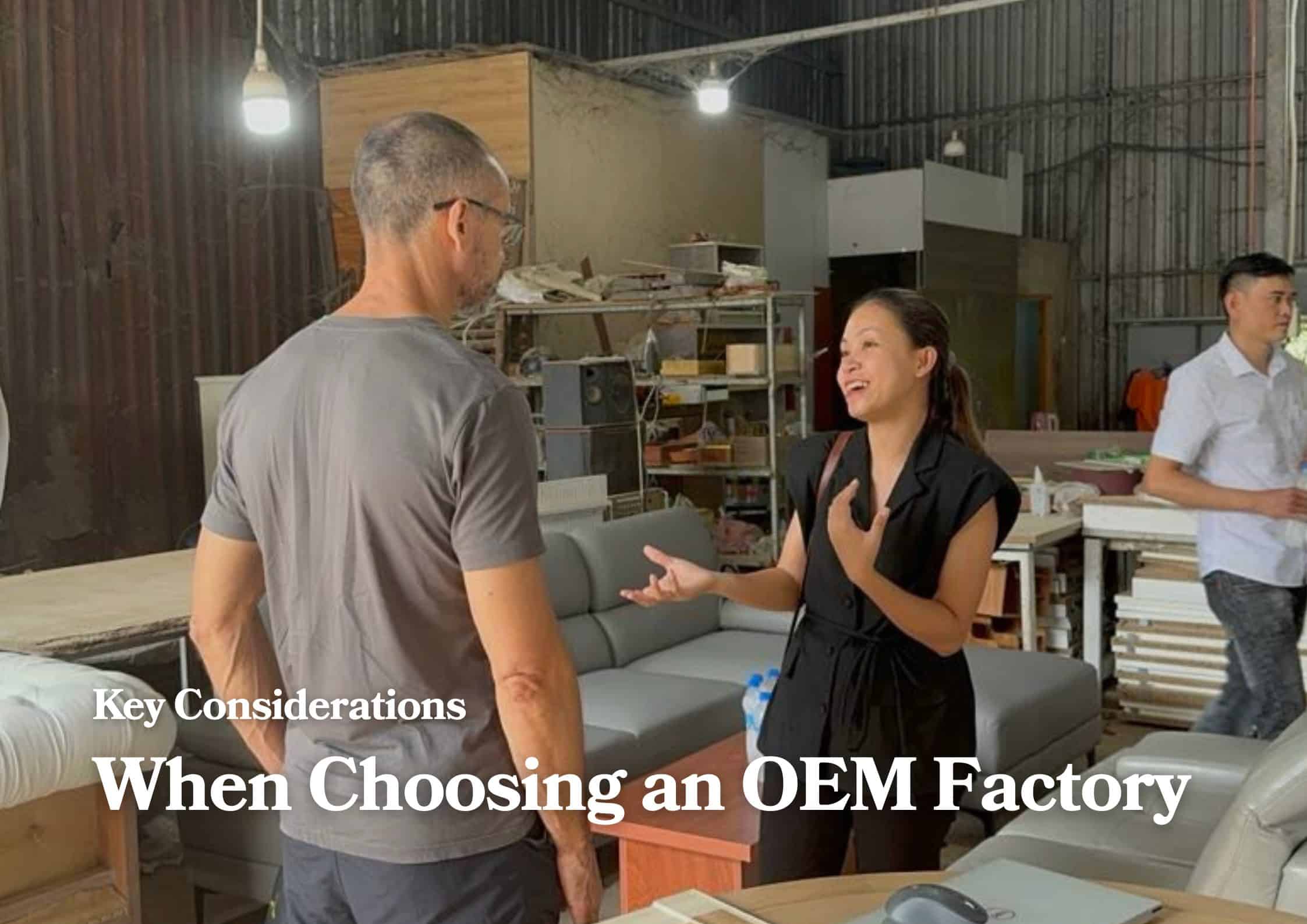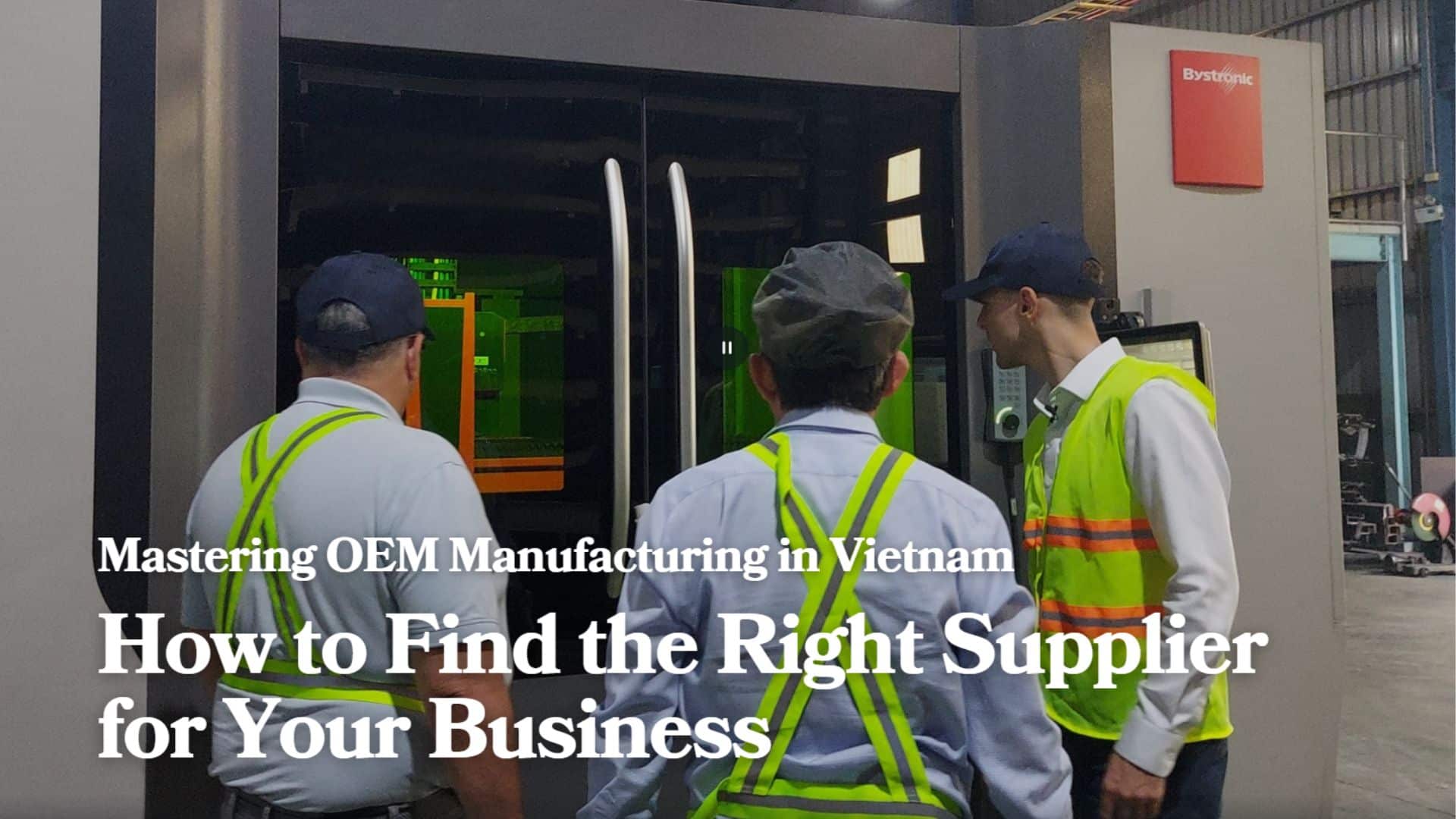Vietnam has become one of the most promising destinations for OEM manufacturing, especially in industries like furniture, textiles, electronics, and metal fabrication. With strong industrial growth, rising labor productivity, and cost-competitive production, Vietnam offers global businesses a strategic base for OEM production. In this article, we’ll break down the essentials of OEM manufacturing in Vietnam and guide you on how to choose the right OEM supplier for your needs.
Understanding OEM Manufacturing
OEM, or Original Equipment Manufacturing, is a model where a company outsources production to a third-party factory while retaining control over product design, branding, and sales. This allows companies to bring products to market faster and more cost-effectively without investing in their own production facilities.Vietnamese OEM factories focus on efficient, export-ready manufacturing while brand owners handle marketing and distribution.
Watch this video to see how an OEM factory in Vietnam operates, specializing in electrical cabinets and sheet metal parts, a rapidly growing sector in Vietnamese manufacturing. You will get a closer look at real production lines and understand what makes OEM manufacturing in Vietnam both scalable and reliable.
Vietnam’s Manufacturing Landscape
In 2024, Vietnam’s total export value reached USD 405.5 billion, with over 356.7 billion USD (nearly 88%) coming from manufactured goods, according to Vietnam’s General Statistics Office. This includes key OEM sectors such as electronics, garments, furniture, and metal components.
Sectors such as wood and wood products, textiles, and footwear have shown steady growth and remain among Vietnam’s core OEM industries.
Furniture: Vietnam is a major global furniture exporter, known for producing a wide range of indoor and outdoor furniture, particularly patio and garden collections. Many international buyers rely on Vietnamese factories for their OEM needs.
Textiles and Garments: As a well-established industry, Vietnam’s textile and garment sector offers extensive OEM services, including fabric sourcing and technical design support.
Electronics and Components: Vietnam has become a key hub for producing electronic components such as printed circuit boards (PCBs), plastic casings, wiring systems, and more.
Thanks to free trade agreements like the EVFTA (EU–Vietnam Free Trade Agreement) and CPTPP (Comprehensive and Progressive Agreement for Trans-Pacific Partnership), Vietnam benefits from tariff advantages that support strong export growth.
How to Find OEM Manufacturers in Vietnam
Finding a quality OEM supplier in Vietnam takes more than browsing online directories. While platforms may offer a starting point, many listed factories may lack export experience, clear certifications, or strong communication skills.
To identify reliable OEM manufacturers in Vietnam, a combination of local expertise and direct engagement is essential.
One effective approach is to work with experienced local sourcing agents. These professionals have in-depth knowledge of the manufacturing landscape and can connect you with verified OEM factories that match your product requirements. Their support often includes factory scouting, audit coordination, sample evaluation, and negotiating minimum order terms. This is especially valuable if you are sourcing remotely.
Another valuable channel is attending industry-specific trade shows such as VIFA Expo for furniture or HAWA for broader industrial sourcing. These events offer a chance to meet OEM factory representatives face to face, review sample quality on site, and initiate direct conversations about your project.
Lastly, whether through an on site visit or a virtual walkthrough, conducting factory inspections or third party audits is critical. This step helps confirm the factory’s production capabilities, working conditions, and compliance with your target market’s standards. It lays the foundation for a transparent and dependable OEM manufacturing partnership.
By combining digital research with local insight, you reduce the risk of miscommunication, delays, or substandard quality issues that are common when sourcing OEM factories remotely.

What to Consider When Choosing a Vietnamese OEM Factory
Selecting the right partner for OEM manufacturing in Vietnam requires more than just price comparison. Key factors help ensure long-term success.
Production Capabilities: Confirm the factory’s experience with your product type, especially if it involves technical features or custom packaging. Ask for samples or past export work.
MOQs: Minimum order quantities vary widely among OEM manufacturers in Vietnam. Some factories are flexible, especially during the sampling phase, while others require higher volumes. Clarify MOQ expectations early to ensure alignment with your business needs and future scaling plans.
Communication: Smooth communication is essential in OEM manufacturing. Language barriers can lead to costly misunderstandings, so working with bilingual staff or a trusted third-party sourcing agent can help ensure clear coordination throughout the process.
Lead Times: Some OEM suppliers prioritize larger clients. Clarify timelines and their ability to handle last-minute changes or small tweaks.
Certifications: A qualified OEM manufacturer should meet your market’s standards and provide export-ready documentation like CE or UL.
Transparency: Look for factories willing to offer video tours or third-party audits. Openness is a good sign of professionalism in OEM manufacturing.

Final Thought: Building Long-Term Success Through OEM Manufacturing in Vietnam
Vietnam has firmly positioned itself as a strategic hub for OEM manufacturing, offering a unique combination of skilled labor, export-oriented infrastructure, and growing sectoral expertise across furniture, textiles, electronics, and metal components. For businesses looking to scale production without owning a factory, Vietnam provides the right balance of flexibility, quality, and cost efficiency.
However, success in OEM manufacturing depends on choosing the right partners. From verifying factory capabilities and certifications to navigating communication challenges and negotiating MOQs, each step requires careful attention. Working with sourcing agents, attending trade shows, and conducting on-site or virtual inspections can help you build confidence and reduce risk.
As global supply chains continue to evolve, Vietnam stands out as a future-ready destination for reliable, scalable, and export-focused OEM manufacturing. With the right strategy, your partnership with a Vietnamese OEM factory can become a cornerstone of long-term growth.

